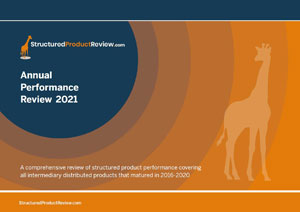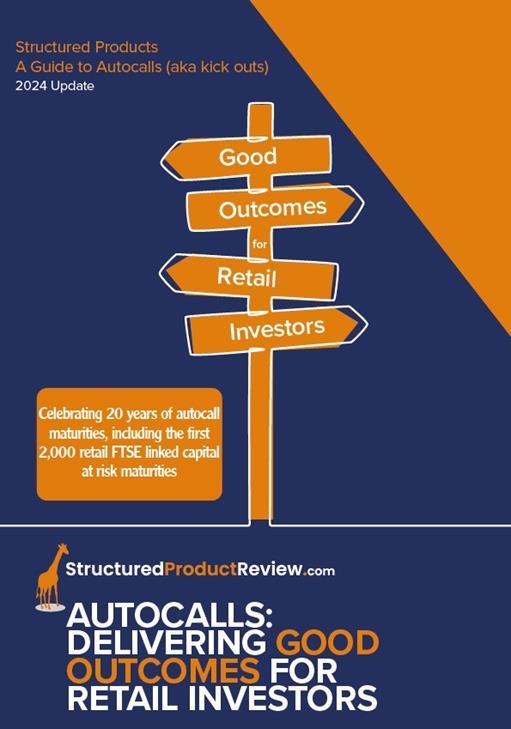02/10/2024
Once described as ‘spread bets on steroids’, in the last decade 58 share-linked structured products were issued in the UK retail space, the last being released in 2023. These structures are those on the higher end of the risk scale and arguably highly speculative and as such may have been used as a small portion of client portfolios. For some advisers, managing higher risk portfolios, these may have been the only structures they entertained, whereas others with a lower risk approach may have avoided all iterations of them.
By their very nature, in terms of maturity outcomes share-linked structures have represented some of the best and worst performers and in this article we explore the extremes.
In the UK retail space we have seen various iterations of share linked structures using baskets of shares of varying sizes. Whilst the outcome will typically be dictated by the worst performing share, we have seen some that, for example track a basket of ten blue chip shares but disregard the worst performing three, which of course reduces the risk albeit these have been rare. More commonly they have been baskets of just three to five individual shares and these have led to some eye-watering potential returns on offer.
One of the highest coupons offered was 34.5% per year! This autocall required the share price of GlaxoSmithKline, Vodafone and Barclays to be at or above the initial levels on an anniversary to trigger a maturity. Given the headline coupon and the household names this was something that may have tempted even the most risk averse to consider allocating a small percentage of their portfolio. Beyond counterparty risk, this investment was at the mercy of the worst performing of the three shares and would track the fall in such if it was more than 50% lower at the end of the term. As it was, for this structure, a positive maturity was not triggered and whilst at the start of the pandemic a loss looked certain, Barclays share price recovered just enough over the next few months to give a maturity returning the original capital.
Other share linked structures haven’t been so fortunate with six maturing, returning less than 40% of original capital at the end of the maximum term, despite most of these having a defensive or step-down feature. Of course, when tracking individual shares there is the potential for a total loss where unlike a mainstream index the underlying value could fall to zero. Fortunately, we have not witnessed any of the shares utilised in UK retail contracts do so.
The table below shows the best and worst share linked plans maturing in the last decade.
|
Start Date |
Potential return |
Share Link |
Actual Term |
Counterparty |
Final gain/loss % |
Annualised return |
|
April 2014 |
3.875% per quarter held |
HSBC, M&S, BAE, Anglo American, IAG |
6 |
Morgan Stanley |
-78.17 |
-22.37% |
|
May 2014 |
4% per quarter held |
HSBC, M&S, BAE, Anglo American, IAG |
6 |
Morgan Stanley |
-77.49 |
-21.97% |
|
September 2012 |
4.5% per quarter held |
AstraZeneca, Anglo American, Shell, Sainsbury, Aviva |
5 |
Royal Bank of Scotland plc |
90 |
13.69% |
|
December 2012 |
18% each year held |
BP, Tesco, Aviva |
5 |
Royal Bank of Scotland plc |
90 |
13.69% |
|
October 2014 |
30% after year one and 15% per six months held thereafter |
GlaxoSmithKline: Vodafone:, Barclays |
2.5 |
Morgan Stanley |
75 |
25.07% |
At an overall view in the last 20 years, of the 102 capital at risk share-linked UK retail autocall maturities, 70 returned a gain, 14 returned capital only and 18 returned a loss. Comparatively, over 2000 capital at risk FTSE linked autocalls matured realising an average annualised return of 7.62% over an average 2.2 years – none returned a loss and 13 returned capital only.
A 69% positive hit rate on share-linked plans may not seem like a bad deal given the double digit annual returns offered, however in the context of the sector’s mainstay, where 99% realised a gain with an overall higher average annualised return it may be best to stick to the ‘boring’, proven track record investment that is a FTSE linked autocall, or perhaps dual index plans which have enjoyed 97% success with higher returns.
Structured investments put capital at risk.
Past performance is not indicative of future results.
Also in this section
- How old is too old? Are structured products to die for?
- Product focus - October 2024
- Q3 2024 Issuance
- Q3 2024 maturity results
- A share of spread bets on steroids?
- Product focus - September 2024
- Maturities of the month - August 2024
- Right on time
- Product focus - August 2024
- Keep calm and zoom out
- 2,000 and counting
- Q2 2024 maturity results
- 20 years of autocall maturities
- Product focus - June 2024
- Fixed income or interest?
- Maturities of the month - May 2024
- The barrier debate - revisited
- Product focus - April 2024
- Maturities of the month - April 2024
- Time to call
- I don't believe markets are ever too high for Structured products!
- Notes on counterparty exposure
- Return of Nikkei
- Q1 2024 issuance
- Q1 2024 maturity results
- Structured Products – AAAAAGH!
- Hop in CIBC
- Re-enter Santander
- How to build a financial fortune - revisited
- Issuance in 2023
- Where's the risk?
- Questionable offerings
- Challenging the case against structured products - 'Loss of dividends'
- Navigating the investment landscape
- Challenging the case against structured products - Counterparty risk
- 6-year autocalls approaching final destination
- 1,750 FTSE capital at risk autocall maturities
- The leopard that changed her spots
- Q3 2023
- Challenging the case against structured products - Keydata
- Dilemmas for UK IFA's and the unique role of Structured Products
- 'High charges'
- Precipice bonds
- Intro
- FTSE 100 Contingent Income
- Indexing the indices
- Something different
- Investing through volatility
- 100 10:10s
- The best or worst?
- The 10%/25% 'Rule' that never was
- Structured products and the yield curve
- Fixed income: Capital at risk?
- Prospects for UK inflation - and fun with A.I!
- The Barrier Debate
- More Deposits for now
- Last of the Americans
- What if?
- Time heals all wounds, we hope...
- How to diversify portfolios using structured products?
- The Proof Is In The Pudding...
- Debunking Structured Misconceptions
- 1,500 FTSE Capital-at-Risk Autocall Maturities
- Q3 2022 Maturity Results
- What do we prefer?
- Deposits vs Capital ‘Protected’
- There’s time yet…
- Where did you invest your clients?
- A Six-Month Reflection
- Return of the Rev Con
- Happy 2nd Birthday FTSE CSDI
- Q2 2022 Maturity Results
- The best and worst yet still the best
- Critique my Suitability - Mariana 10:10 Plan June 2022 (Option 2)
- 10/10 for 55 10:10’s
- Q1 2022 Maturity Results
- 'How to build a financial fortune': a follow up
- Critique my Suitability - Mariana 10:10 Plan April 2022 (Option 2)
- 2021 Capital-at-Risk Autocall Maturity Review
- An unwelcome return...
- CSDI's First Birthday
- Bon Anniversaire
- Introducing the FTSE Custom 100 Synthetic 3.5% Fixed Dividend Index
- Q3 2021 Maturity Results
- Critique my Suitability - Mariana 10:10 Plan October 2021 (Option 2)
- Blurring the lines...
- Beware of false knowledge; it is more dangerous than ignorance
- Good news, bad news...
- Certainty is Certainly a Benefit
- Critique my Suitability - Mariana 10:10 Plan September 2021 (Option 2)
- A Twenty-Year Progression
- Q2 2021 Maturity Results
- Nine 8:8s Post Positive Returns in Falling Markets
- Critique my Suitability
- Q1 2021 Maturity Results
- Morgan Stanley’s Marvelous Maturity Medley
Current Products
We review the UK's retail structured investment sector, providing pertinent support for Professional Advisers and relevant research tools.
View all ⟶


